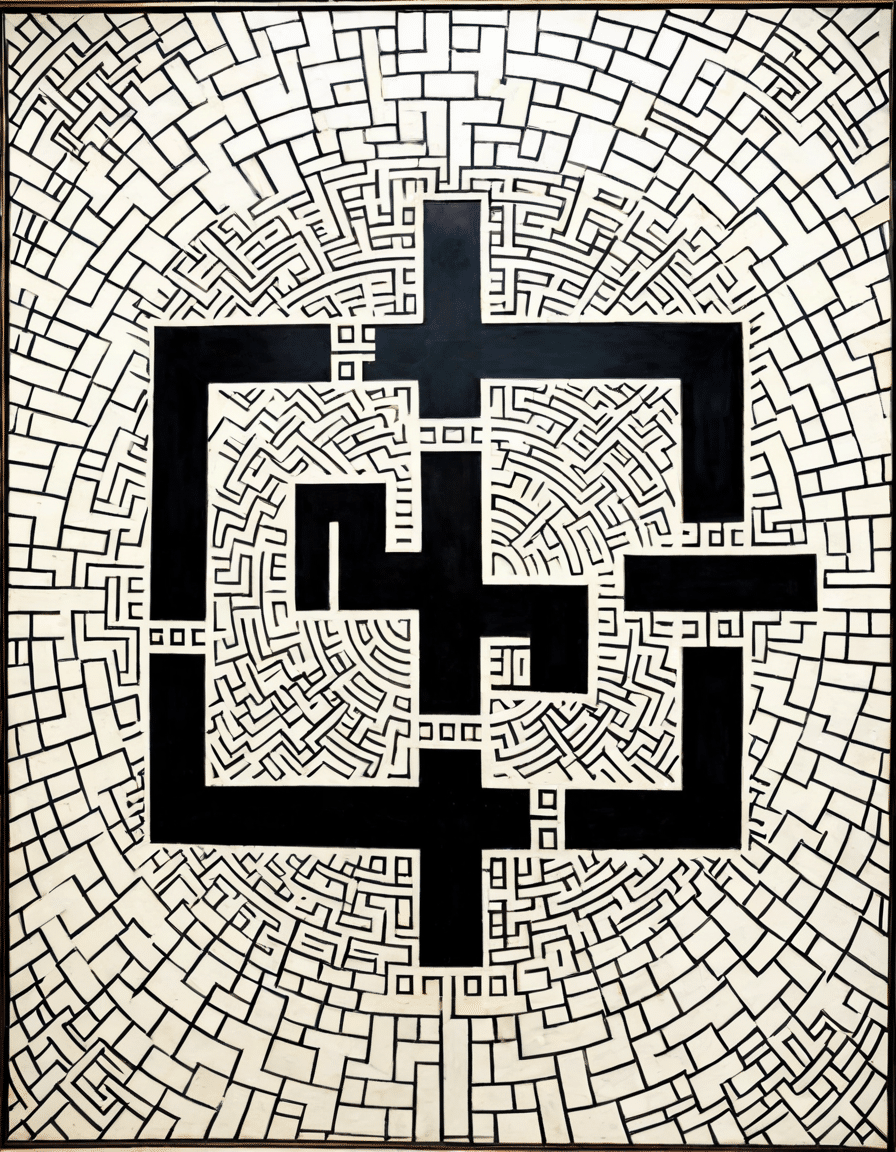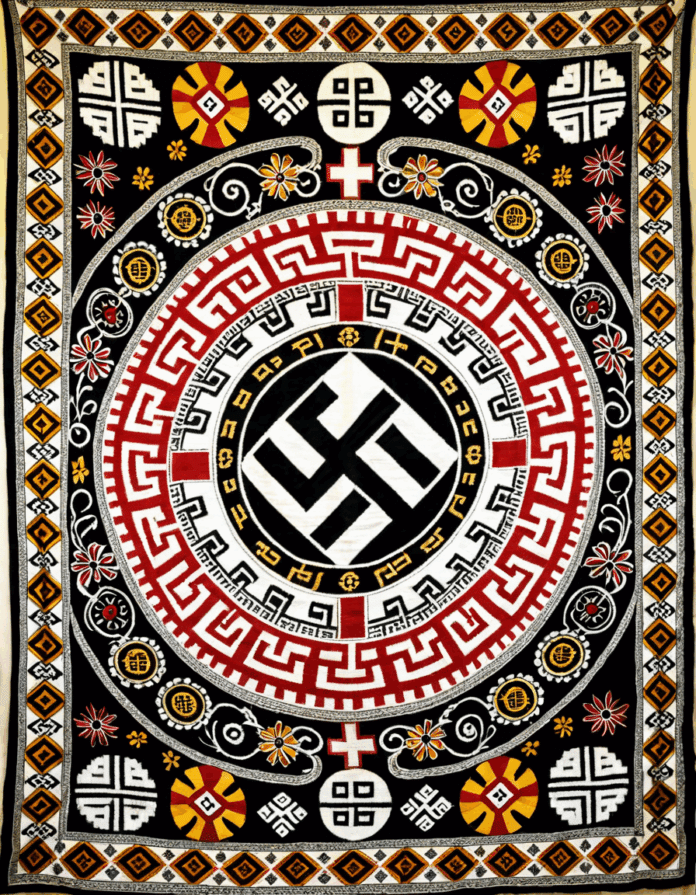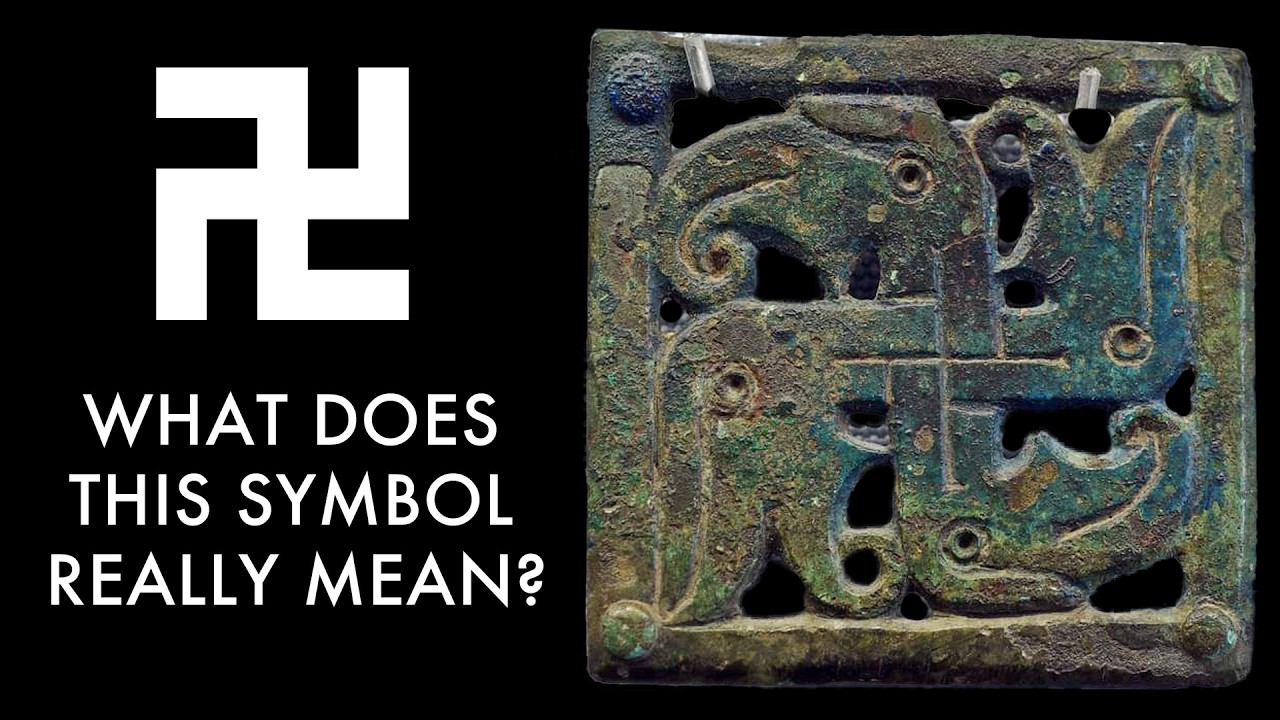The swastika is a symbol that stands at the intersection of rich cultural heritage and deep-seated controversy. With roots stretching back thousands of years, this emblem has adorned temples, homes, and artifacts across several civilizations. Its original meanings often associated with good luck and prosperity have faced overshadowing due to its appropriation by the Nazi regime in the 20th century. This dual legacy has transformed the swastika into a symbol of hate for many in the Western world. Grasping this complex history is key to understanding the ongoing debates surrounding the swastika today.
The Dual Legacy of the Swastika: From Ancient Symbol to Modern Stigma
The swastika has a diverse history. Its journey from auspiciousness to stigma is marked by cultural shifts and historical events. Originally, it symbolized well-being in Hinduism and Buddhism and found acceptance in Native American societies. However, as global events unfolded, particularly World War II, its meaning drastically shifted in the Western context. Today, many people struggle with the swastika’s image, torn between its ancient roots and its modern associations.
Over time, the swastika has faced backlash, particularly when it became synonymous with Nazi ideology and the atrocities committed during the Holocaust. This shift not only impacted perceptions of the swastika in the West but also affected communities worldwide that still value its original meanings. As conversations continue, it becomes increasingly important to differentiate between the swastika’s historical significance and its contemporary implications.
Community members and activists face challenges even when attempting to communicate or depict the swastika. They must navigate a sensitive space where the symbol can spark outrage or provoke discussions about hate versus heritage. This ongoing dialogue reveals the struggle many cultures experience as they confront their past while trying to reclaim their identities.

The Top 5 Cultural Contexts of the Swastika Around the World
1. The Swastika in Hinduism: A Symbol of Prosperity
Hinduism celebrates the swastika as a symbol of peace and prosperity. It plays an essential role in rituals and festivities, often appearing on homes and vehicles during celebrations. The word itself originates from the Sanskrit “svastika,” meaning “well-being,” a testament to its positive imagery that endures in many practices today.
Despite its roots, the swastika’s association with Nazism creates a heavy burden for many practitioners. Some may express hesitance in using the symbol due to fear of backlash or misunderstanding. Yet, it’s crucial to recognize the importance of reclaiming the swastika within Hindu traditions, as it remains a potent emblem of joy and auspicious beginnings.
This ongoing discourse is illustrated in places like Eugene, Oregon, where communities strive to preserve and promote cultural practices linked to the swastika. Local events often showcase traditional artwork that features the symbol, aiming to educate others about its significance while simultaneously confronting the stigma associated with it.
2. The Swastika in Buddhism: A Mark of Happiness
For Buddhists, the swastika embodies the teachings of the Buddha and a representation of dharma. In countries like Bhutan and Nepal, the symbol is commonly found in sculptures, paintings, and even architecture, celebrating its connection to peace and enlightenment.
Despite its esteem within Buddhism, some practitioners face challenges when showcasing the swastika. Critics often conflate its cultural meanings with its Western interpretations, creating tension in dialogues about its place in Buddhist art. This misunderstanding hampers efforts to promote its original significance as a marker of happiness and spiritual growth.
Efforts to educate others also extend beyond religious practices. Some artists have engaged in digital projects, showcasing the swastika through images that emphasize its ties to peace—a unique blend of tradition and modernity that highlights the ongoing quest for understanding its meanings today.
3. Native American and Indigenous Perspectives: A Sign of Life
Various Native American tribes, including the Navajo, have embraced the swastika as a symbol of life, growth, and movement. Often featured in traditional art forms like weaving and pottery, it holds a revered place in their cultural practices. The symbol’s portrayal in local art speaks to the inextricable link between identity and ancestral heritage.
However, these communities often face challenges in preserving their traditions against the backdrop of negative perceptions caused by the swastika’s association with Hitler’s regime. The stigmatisation can lead to the erasure of their cultural practices, pushing indigenous voices to the periphery in discussions about the symbol.
Through resilience and ongoing dialogue, Native American artists and communities are striving to reclaim the swastika’s significance, ensuring that future generations understand its origins and meanings. The balance between advocating for cultural recognition and addressing historical wounds presents an uphill battle but also offers avenues for deeper conversations about identity and heritage.
4. The Cultural Shift: Nazi Germany and Its Implications
The transformation of the swastika into a symbol synonymous with hate began in Nazi Germany, where it became emblematic of Aryan supremacy. This appropriation marked a turning point for the symbol, intertwining it with ideologies of racism and violence that would lead to one of history’s darkest periods.
This shift profoundly affected how societies perceive the swastika today. In Germany, the display of Nazi symbols, including the swastika, is strictly prohibited by law. Such legislation reflects a national effort to confront their tumultuous history and promote societal healing, while also underscoring the complexities involved in reconciling cultural heritage with historical atrocities.
In countries where the swastika holds a more positive connotation, such as India, the challenges differ. Local discussions around the symbol often pit cultural expression against the looming shadow of its Nazi associations. However, some advocates argue for a nuanced understanding that separates the symbol’s original meanings from its historical misuse.
5. Contemporary Reclamation Efforts: Artists and Activists
As society slowly evolves, many artists and activists are exploring ways to reclaim the swastika, aiming to restore its ancient meaning. Various projects across India and online art platforms display the swastika as a sign of hope, pushing back against its negative stereotypes.
Take, for instance, initiatives promoting art that highlights the swastika’s associations with peace and good fortune. By doing so, these campaigns advocate for a separation between the symbol’s original intent and its modern misappropriations. This highlights broader trends where cultural ownership and identity play a pivotal role in interpreting symbols steeped in history.
These reclamation efforts are essential in an increasingly globalized world. Social media platforms like Instagram and Twitter have become venues for these discussions, where individuals share art, stories, and interpretations that challenge the long-standing stigma attached to the swastika. In their hands, it transforms from an image of hate to one of bridging gaps—an emblem of a shared human experience.
Swastika in Modern Discourse: The Impact of Social Media
The rise of social media has brought the swastika back into contemporary conversations, often igniting passionate debates around its implications. Posts featuring the symbol can generate swift responses, revealing a microcosm of society’s ongoing struggle with issues surrounding identity, freedom of expression, and hate speech.
Platforms like Twitter and Instagram have become battlegrounds for differing opinions on the swastika. The tension between artistic expression and public sentiment makes the landscape complex. As individuals navigate their messages, they encounter the historical weight the swastika carries and, through these interactions, reveal the broader implications for communities attempting to articulate their identities.
This emergence illustrates how social channels can act as conduits for dialogue. In sharing experiences or advocating for understanding, users raise awareness around the symbol while confronting its negative perceptions. This discourse acts as a constant reminder of our collective responsibility to be mindful of our language and actions surrounding the swastika and other culturally significant symbols.

Legal Frameworks and Global Responses: Fighting Hate Symbols
Countries have developed various legal frameworks concerning the use of Nazi symbols, including the swastika. For example, in Germany, laws prohibit the public display of such symbols as a direct response to the atrocities committed under the Nazi regime. This legislative approach underscores a collective effort to prevent hate while supporting cultural introspection.
Conversely, countries such as India have engaged in robust discussions surrounding the balance between cultural expression and legal prohibitions. Debate continues about the implications of restricting the swastika in Indian society, especially given its deep roots in cultural practices and rituals that date back millennia.
In other regions, cases like those faced by local artists in Germany advocating for cultural reinterpretation of the swastika highlight the tensions between community values and legal regulations. They encounter a landscape where reclaiming the symbol for cultural purposes often clashes with widespread societal stigmatization.
Wrestling with Symbolism: Perspectives on Reinterpretation and Acceptance
As society evolves, discussions about the swastika reveal complexities surrounding symbolism, appropriateness, and cultural acceptance. Various perspectives challenge whether symbols can truly be “reclaimed” after becoming associated with hate. This debate invites deeper inquiry into how cultures understand the weight of symbols and the historical significance they carry.
Efforts at redefining the swastika’s meanings reflect a broader struggle. As many communities face pushback for their attempts to embrace the symbol’s original heritage, they grapple with the concept of reconciliation. The process is especially vital in regions impacted by deep-rooted stigmas.
Navigating these layered histories creates an opportunity for renewed understanding, dialogue, and ultimately healing. As society grapples with the past while stepping forward, the discussions surrounding the swastika remind us of our shared responsibility to confront prejudice and champion inclusivity in our dialogues about identity and its symbolic representations.
The journey of the swastika—from an emblem of well-being to a sign of hatred—highlights a significant ongoing struggle within society. Engaging these layered stories presents opportunities to foster understanding and confront historical injustices. As we move forward, embracing both the significance and the complexity of symbols like the swastika will be pivotal in building a more inclusive future.
In this context, understanding the swastika is not merely an academic exercise; it’s about creating space for nuanced conversations that encompass diverse narratives. As an evolving symbol, the swastika remains a reflection of our collective journey toward meaning, recovery, and acceptance in a world rife with complexities.
Swastika: A Symbol of Controversy and History
Intriguing Origins
Though often linked to negative meanings today, the swastika dates back over 12,000 years and is found in numerous ancient cultures. Surprisingly, this symbol has been associated with good fortune and well-being across various societies, from Hinduism to Native American traditions. In fact, there’s evidence of its use in locations as distant as Eugene, Oregon, where community festivals often include diverse cultural symbols. This rich history shows how a seemingly simple shape can carry vastly different interpretations.
Pop Culture Perceptions
Interestingly, our modern portrayal of the swastika is often muddled by its appropriation in recent history. It appears in unexpected corners of pop culture; take the Daddy Day Care cast, for instance. While the movie revolves around family and fun, it highlights how symbols, including the swastika, can lead to uncomfortable discussions about cultural representation. It’s a reminder that symbols can transcend their original meanings, catching the public’s eye in a myriad of contexts.
Surprising Connections
You’d never guess that the swastika even had lukewarm ties to various national sports teams! The Duke Blue Devils men’s basketball team, for instance, has maintained a competitive spirit that echoes the swastika’s initial connotations of power. On a lighter note, it’s entertaining to think about how symbols can become intertwined with quirky modern trends, such as the recent meme involving the Grandma McFlurry McDonald’s craze. The co-opting of symbols for chatter and humor often sparks discussions about cultural significance, asking us to reflect on how far we’ve come from the swastika’s ancient roots.
As we delve deeper into societal consciousness, understanding the shifting meanings of symbols like the swastika helps us appreciate the complexity of culture. Let’s keep learning and growing—after all, knowledge is power!







